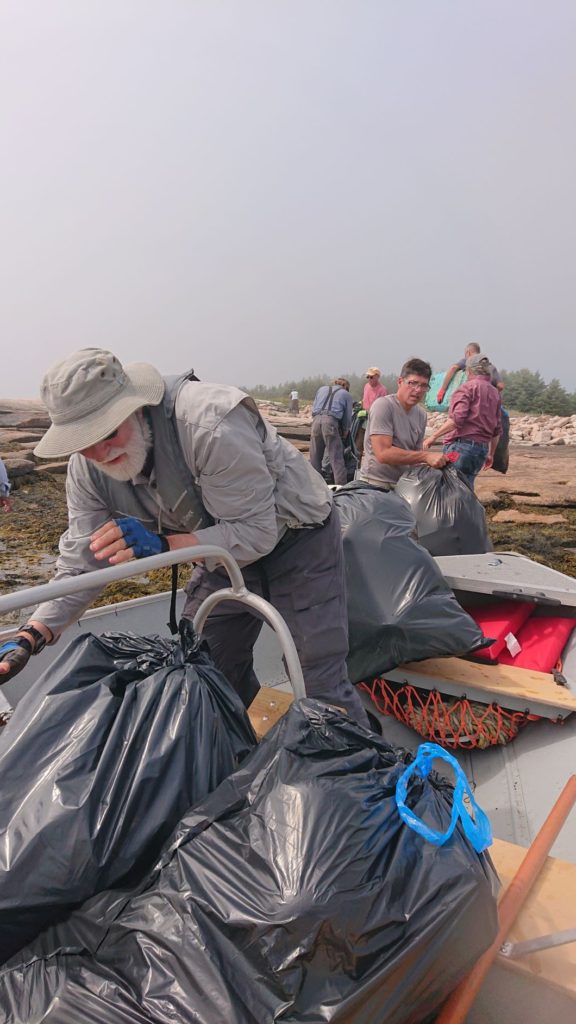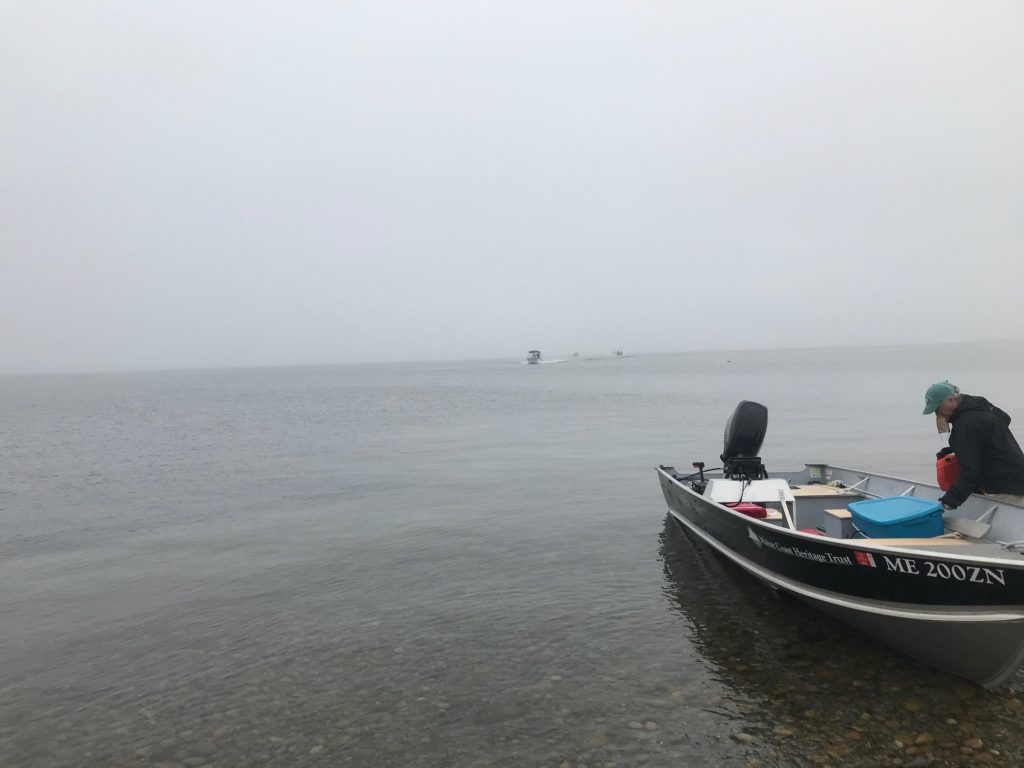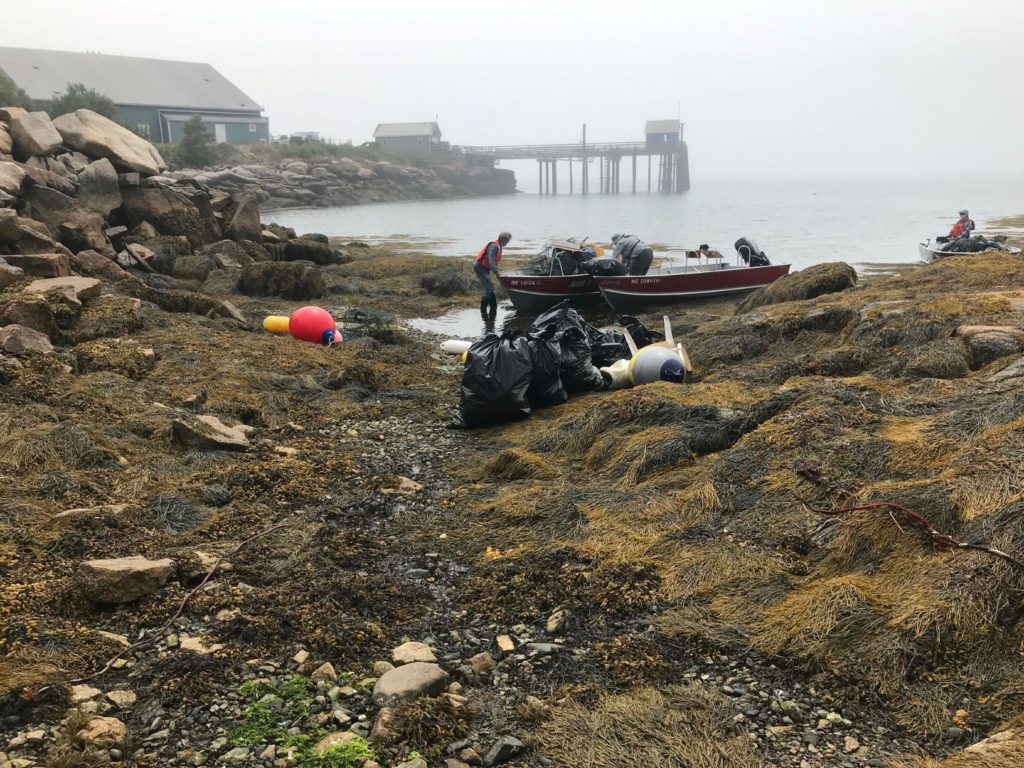
In August, DCC partnered with the Maine Coast Heritage Trust (MCHT), the Maine Island Trail Association (MITA) and the Downeast Institute (DEI) on another cleanup effort on Browney Island off of Beals. With the help of a dozen or so volunteers, we filled a 20 yard dumpster of mostly plastic debris and pieces of fishing gear that washed up on the island. A huge thank you is in order for all the volunteers who made the cleanup possible, MCHT and MITA staff and volunteers for providing boats and helping to organize the effort, and DEI for letting us drop a dumpster and shuttle trash to their facility, which is close by Browney Island.


After acquiring the island in 1995, MCHT, who now holds a Conservation Easement on the property, transferred the property to the then Great Auk Land Trust (now DCC, following a merger of Great Auk and the Quoddy Regional Land Trust). Browney was noted for its abundant nesting Eider population, with surveys in the 1970’s, 80’s and 90’s showing 800 to 1,200 nesting birds on the island. Populations have sharply declined along the Maine coast since the early 90’s and no nesting Eiders have been documented on Browney Island in subsequent surveys in the late 90’s and as recently as 2014.
In 1874 the U.S. Life Saving Service established a life-saving station on Browney, one of five such stations on the Maine Coast. The station was a small house resting on stone piers at the northeast point of the island. Island owners leased the station’s 60′ x 100′ lot to the United States of America for 20 years. A keeper and a crew of six surfmen manned the station from fall until spring, going on foot patrols around the island, looking out for vessels in distress and launching a surfboat when needed. In 1880 the life-saving station was moved to Crumple Island, which had better views, better access to Eastern Bay and Head Harbor Island, and a water supply, which Browney lacked. After the station was moved, three schooners were shipwrecked on Browney’s ledges, between 1882 and 1904; two carried coal and one had a cargo of furniture bound for a summer hotel. Pieces of the stone piers that supported the life-saving station may still be found on the island. During his ownership, John Flender photographed a windlass and wooden debris from the shipwrecks on the southwest shore, but noted in his 2010 addendum that they were no longer visible, probably having succumbed to storms and waves.

